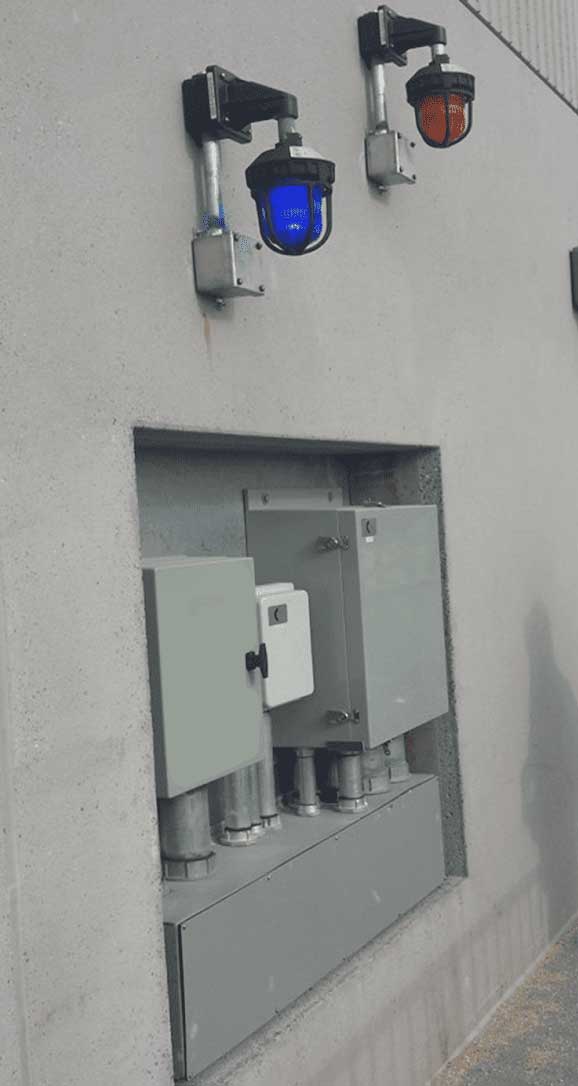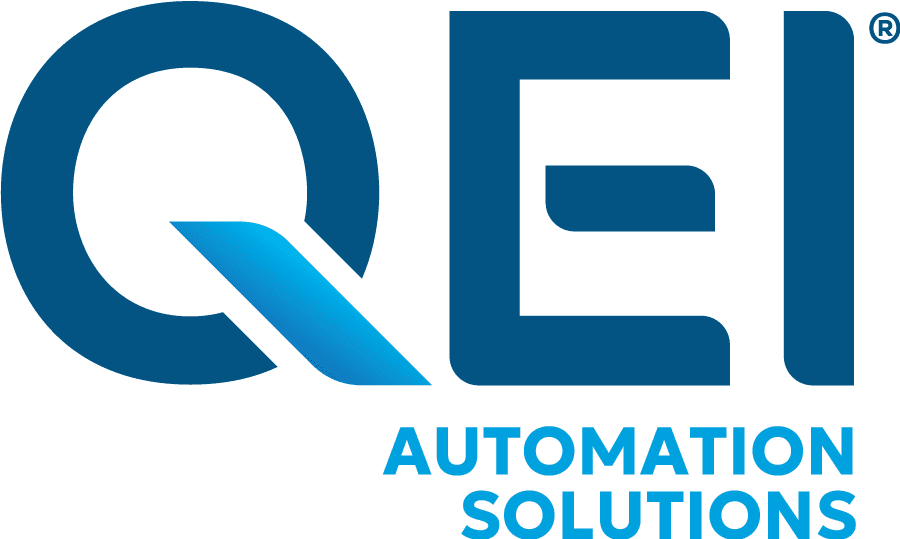
ETS – Emergency Trip System Monitoring
The Emergency Trip System (ETS) is used for monitoring trip conditions by Trip Push Buttons (TPB) at multiple locations along the rail track. Trip Push Buttons are used for tripping the two adjacent substations and deenergizing the feeding power of a rail track section in case of an emergency. A phone is used to communicate directly with the dispatch control center and report an emergency in the track.
The system monitors TPB coil voltage, current trip status and the general health of the ETS equipment installed along the track. Bright blue LEDs always show the location of the ETS unit along that section and a flashing amber LEDs shows train drivers the presence of a work crew on a track section.
The status conditions of each ETS unit along the track and the fact that personnel are present on that section of line are relayed to the nearest ePAQ data concentrator for local display (via touch screen HMI) as well as relaying this information to the central SCADA Operations Center.
- Works With Distributed DIO Modules for Trip Condition Monitoring, Hardware Fail Alarms and Worker Presence Warnings
- Monitors Safety Shutdowns of Feeders
- Local Amber/Blue LED Indicators for Announcing ETS Unit Location and Safety Indication of Personnel Being Present
- Notifies Nearest Data Concentrator and SCADA Master Station of Current Trip Condition
- Redundant Communications for High Reliability
- Supports IEEE Standard DNP3 Protocol
- Status Changes are Time Stamped via Distributed I/O Clock
- 19″ Rack or Panel Mountable
Communication
-
Operations Center signaling of a Trip Condition via a IEEE Standard protocol, DNP 3
Level 2.
- Substation signaling warning notification at each end of the Track Segment.
- Redundant communication channels for reliability of data.
- USB Maintenance Port for easy configuration and local monitoring.
- Communication over many media options (Fiber, RS-485, CAT5e) in one module.
Capabilities
- IRIG-B Time Interface, designed to provide time synchronization, time stamping of all events and sequence of events (SOEs).
- Local & Remote Switch for safety, disengaging controls when onsite service is taking place.
- Light Indication (Blue & Amber) logic/intelligence to signify trackside as “clear” or “occupied”.
- Controls work with a “select-before-operate” (SBO) to avoid misoperations.
- “Broken Wire” detection made possible by the topology of the ETS Controller Network.
Physical
- Ruggedized for trackside conditions
- Tested to IEEE standards; C37.90.1-2000
- Temperature ranges to -40 to +85 degrees C, 5 to 95% humidity (non-condensing)
Power
- 12 Vdc, 125Vdc, 120Vac, 277 Vac.
What Our Customers Have to Say
“QEI is always making improvements to their product, and it is almost always a result of customer feedback. QEI listens, acts, and highlights the improvements every year at the user conferences. Great job QEI!”
North American Utility
“QEl did a fabulous job installing and configuring four SCADA servers for our Quad-Redundant QEI SCADA system.”
Florida Water Utility
“For over the last 10 years, we have had a QEI SCADA system that monitors our two substations and line reclosers. We have been very happy with the quality of their product and more importantly, the service that they provide to maintain the system. Everyone at QEl really seems to know their product inside and out.”
Village of Lake Placid
“We have utilized QEl for our SCADA needs for over 20 years. They provide an excellent system, both software and hardware. QEl’s staff has alwavs been there for our needs and is always helpful and friendly We highly recommend QEl’s system and their maintenance contracts to keep your system current.”
Emerald Coast Utilities Authority (ECUA)
“The new website is very user-friendly. I really like the Customer Portal, which provides quick access to manuals, presentations, and software updates. Q Tips and more.”
City of Wilson, NC
“We have always been able to rely on QEl for their technical knowledge and support. Thank you QEI.”
Mid-Atlantic Municipal Utility
“QEl is a company that not only makes a great product but backs it up with outstanding service.”
Village of Lake Placid
It’s Easy to Get Started
STEP 1:
Schedule a Consultation Call
Let’s talk through your goals and what your current infrastructure looks like.
STEP 2:
We’ll Collaborate to Develop a Solution
We’ll develop a plan to modernize your infrastructure to meet your goals.
STEP 3:
Experience the Advantages of QEI
We’ll coordinate and execute the plans for your upgraded system.


